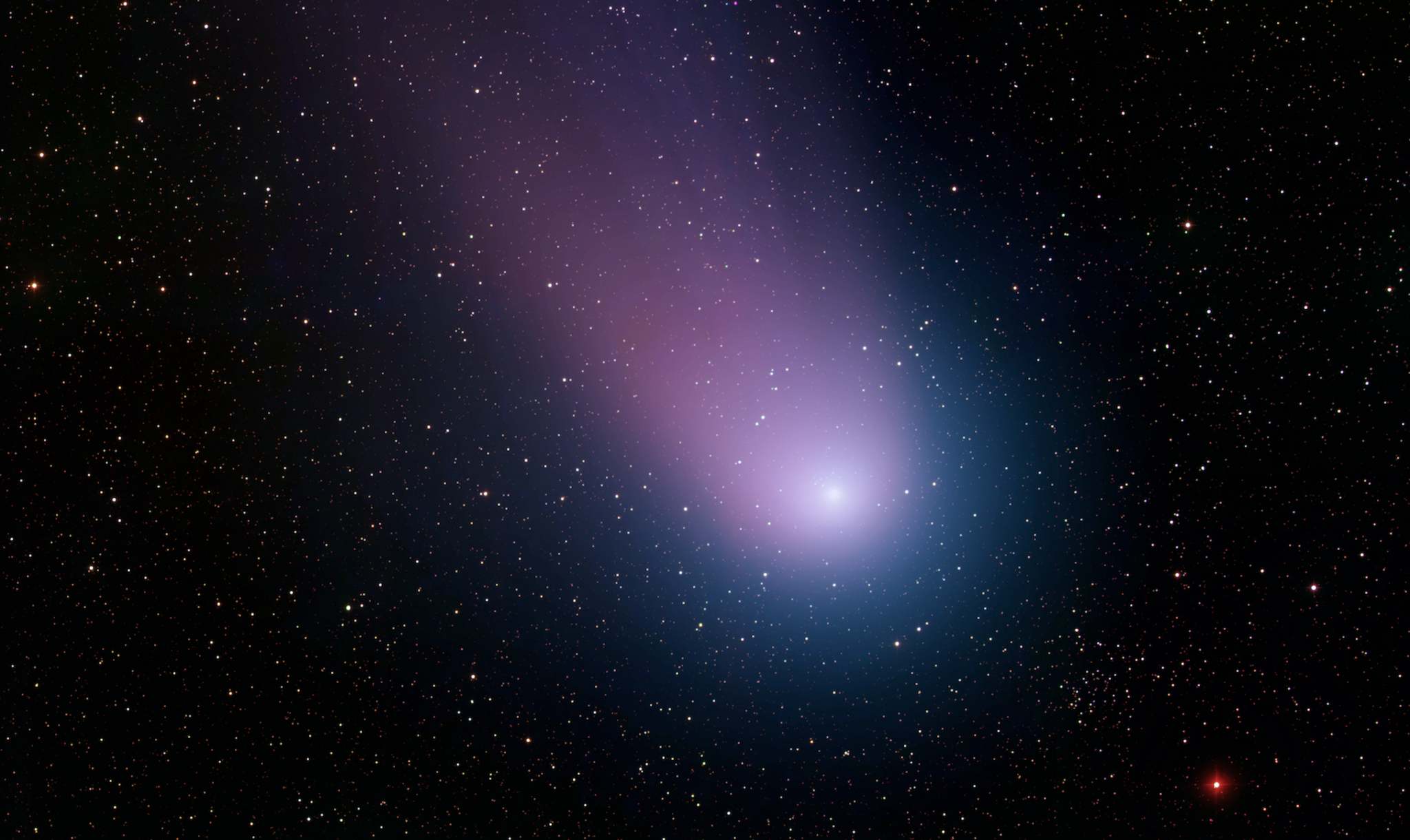Watch for Comets this Fall
This fall, astronomers are watching for two comets that are predicted to brighten enough to see with binoculars and possibly even the unaided eyes. These comets are 21P/Giacobini-Zinner and 46P/Wirtanen. Star Walk 2 app has now been updated with the tracking info for both of these comets. One can find the comets using the Search function within the app.
Comet 21P/Giacobini-Zinner returns to our vicinity every 6.5 years — hence the “P” for “periodic” in its designation. It has been gradually brightening because it is approaching Earth’s orbit. Later this week, once the bright, full moonlight wanes, you should be able to see the faint fuzzy greenish object in binoculars or a small telescope, if you can escape city lights.
The comet is located in the north-northeastern sky on a track that moves it downwards every night. Next Sunday, it will have descended to land only a finger’s width to the upper right of the very bright star Capella in Auriga (the Charioteer); putting the two objects in the field of view of a low magnification telescope. The star Capella will still be fairly low at 11 pm local time, but the comet and star will be carried higher during the course of the night due to Earth’s rotation.
A second comet named 46P/Wirtanen is predicted to become much brighter by December. Right now, it is tickling the belly of the whale (Cetus), but it’s far too dim looking for it now.
46P/Wirtanen is a small, short-period comet with a current orbital period of 5.4 years. It was the original target for close investigation by the Rosetta spacecraft, planned by the European Space Agency, but an inability to meet the launch window led to Rosetta being sent to 67P/Churyumov–Gerasimenko instead. It belongs to the Jupiter family of comets, all of which have aphelia between 5 and 6 AU. Its diameter is estimated at 1.2 kilometers (0.75 mi).
46P/Wirtanen was discovered photographically on January 17, 1948, by the American astronomer Carl A. Wirtanen. The plate was exposed on January 15 during a stellar proper motion survey for the Lick Observatory. Due to a limited number of initial observations, it took more than a year to recognize this object as a short-period comet.
On 16 December 2018 the comet will pass 0.0781 AU (11,680,000 km; 7,260,000 mi) (~30 LD) from Earth, reaching an estimated magnitude of 3 to 7.5, making this pass the brightest one predicted, and the brightest closest approach for the next 20 years.




